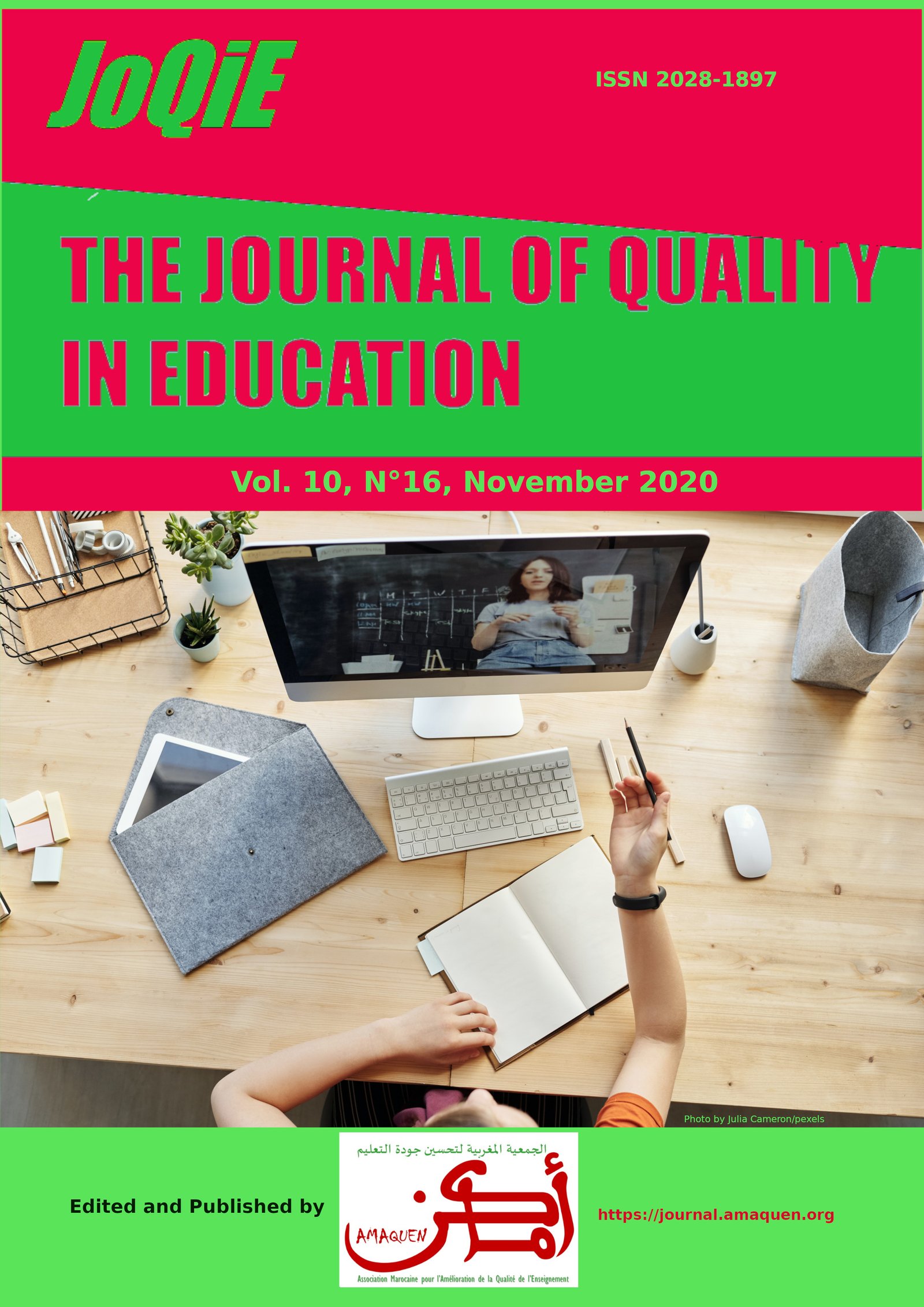The Theories of learning and methods of teaching foreign languages Literature review
Main Article Content
Abstract
The objective of this article is to provide a historical overview of the learning trends that have marked several fields over the past two centuries, and from which the methods of teaching foreign languages have been largely inspired. Teaching and learning a foreign language has always been a major concern of officials working in the education sector. Finding a unique method, perfect and suitable for all learners was the center of interest of most researchers of all backgrounds, linguists, educators or trainers. Three major theories of learning have really changed the field of education and specifically the field of foreign language acquisition. These three currents are respectively behaviorism, cognitivism and constructivism. Each current had its supporters and detractors depending on the progress made at the end of their research. The methods that emerged from these three learning theories also had their ups and downs depending on the degree to which the desired objectives were achieved. In the course of this study, we plan to bypass, in chronological order, the different methods and approaches, coming from the three streams, and practiced in the teaching of foreign languages. Our attention will be focused on the study of the audio-oral method, the audio-visual method, the communicative approach and the skills-based approach. We also offer, in this article, a discussion whose interest is to elucidate the circumstances which led to the success or failure of a particular method. We will also focus on the successes and limitations of each of these methods. The conclusion will be the subject of a reflection on all the points covered in the article while offering an opening on other solutions that can improve the teaching / learning of foreign languages.
Article Details

This work is licensed under a Creative Commons Attribution-ShareAlike 4.0 International License.
Authors who publish with this journal agree to the following terms:
- Authors retain copyright and grant the journal right of first publication with the work simultaneously licensed under a Creative Commons Attribution License that allows others to share the work with an acknowledgement of the work's authorship and initial publication in this journal.
- Authors are able to enter into separate, additional contractual arrangements for the non-exclusive distribution of the journal's published version of the work (e.g., post it to an institutional repository or publish it in a book), with an acknowledgement of its initial publication in this journal.
- Authors are permitted and encouraged to post their work online (e.g., in institutional repositories or on their website) prior to and during the submission process, as it can lead to productive exchanges, as well as earlier and greater citation of published work.
References
Allen, J. P. B. (1980). A three-level curriculum model for second language education. Keynote address, Ontario Modern Language Teachers Association, Toronto, Ontario
Brahimi, C., Farley, C., & Joubert, P. (2011). L'approche par compétences : un levier de changement des pratiques en santé publique au Québec. Québec : Institut national de santé publique du Québec.
Breen, M. & Candlin, C. (1980). The essentials of a communicative curriculum in language teaching. Applied Linguistics, 1 (2), 89-112.
Brooks, N. (1964). Language and language learning : Theory and Practice. 2nd Edition. New York : Harcourt, Brace, & World.
Canale, M., & Swain, M. (1980). Theoretical bases of communicative approaches to second language teaching and testing. Applied linguistics, 1(1), 1-47.
Chomsky, N. (1966). Current issues in linguistic theory. Mouton : The Hague
Chomsky, N. (1976). Reflections on Language. Pantheon, New York,
De Ketele, J. M., & Gerard, F. M. (2005). La validation des épreuves d’évaluation selon l’approche par les compétences. Mesure et Évaluation En Éducation, 28 (3), 1-26.
Docking, R. (1994). Competency-based curricula–the big picture. Prospect, 9 (2), 8-17.
Doolittle, P. E., & Camp, W. G. (1999). Constructivism : The career and technical education perspective. Journal of Vocational and Technical Education, 16 (1), 23-46.
Hymes, D. (1972). On Communicative Competence. Dans J. Pride, & J. Holmes (dir.), Sociolinguistics (p. 269-285). Harmondsworth Penguin Books.
Lado, R. (1964). Language teaching, a scientific approach. New York : McGraw-Hill
Lightbown, P. M., & Spada, N. (2013). How languages are learned 4th edition-Oxford Handbooks for Language Teachers. Oxford : Oxford university press.
Littlewood, W. (1981). Communicative language teaching. Cambridge : Cambridge University Press.
Myles, F., & Mitchell, R. (2007). Using information technology to support empirical SLA research. Journal of Applied Linguistics and Professional Practice, 1 (2), 169-196.
Ortega, L. (2014). Understanding second language acquisition. Routledge.
Piaget, J. (1977). La naissance de l'intelligence chez l'enfant (Vol. 370). Paris : Delachaux et Niestlé.
Puren, C. (1988). Histoire des méthodologies de l'enseignement des langues. CLE international
Richards, J., & Rodgers, T. (2001). Approaches and methods in language teaching. New York : Cambridge University Press.
Schunk, D. H. (2012). Learning theories : An educational perspective. Pearson.
White, L. (2003). Second language acquisition and universal grammar. Cambridge University Press.
Widdowson, H.G. (1979). Explorations in applied linguistics. Oxford : Oxford University Press.
Wilkins, D. (1972). Linguistics in language teaching. Cambridge : MFT Press
Wilkins, D. (1976). Notional syllabuses. Oxford : Oxford University Press.
Yalden, J. (1983). The communicative syllabus : Evolution, design and implementation. Oxford : Pergamon Press.





